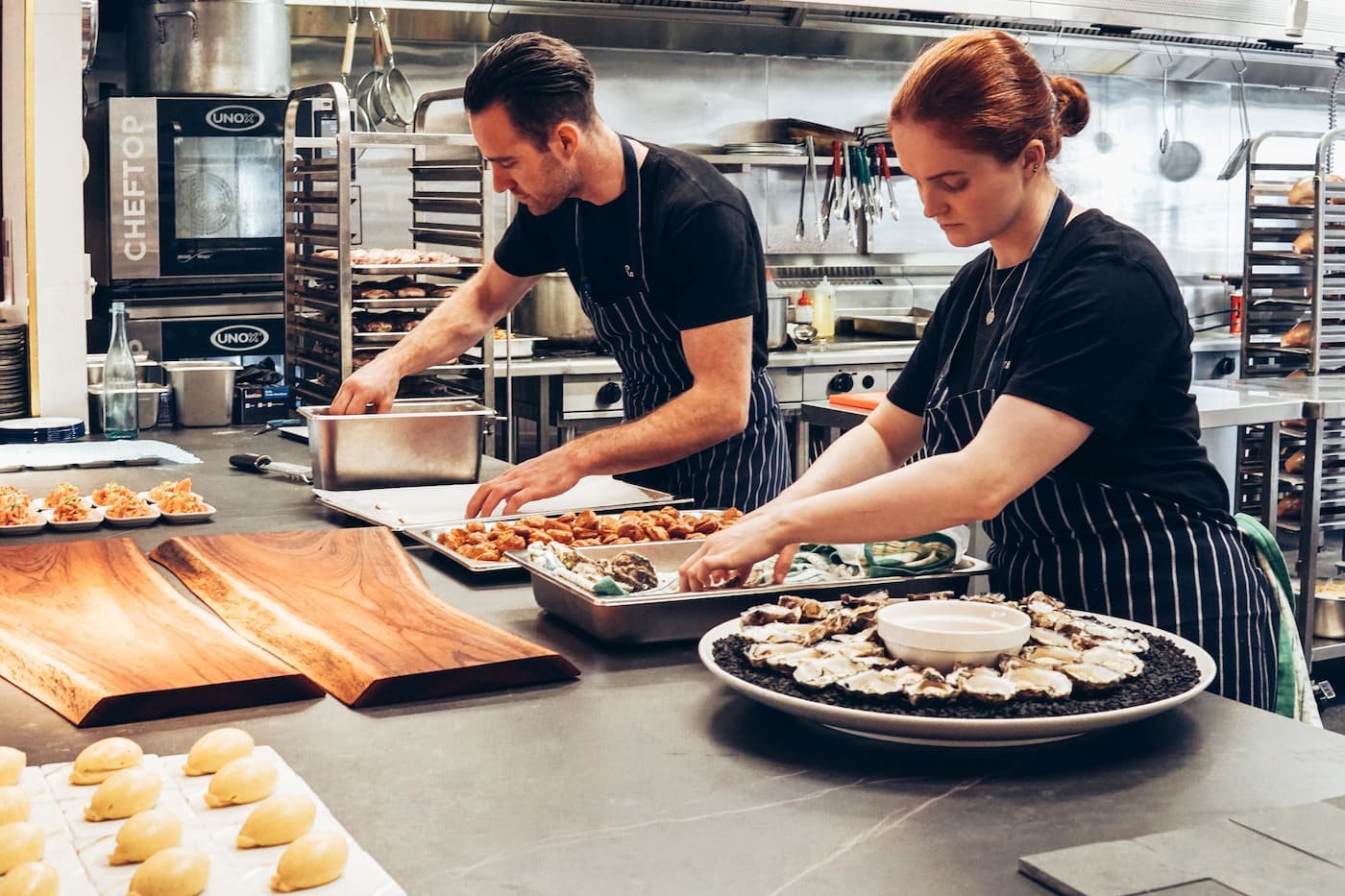How to start a catering business in 7 steps
Editorial Team
6 min read
While the restaurant industry has been slow to rebound following the pandemic, business is booming for catering companies. Analysts estimate that the global catering services market size will grow by $103.28 billion from 2022 to 2027. It’s a great time to consider starting a catering business.
Catering businesses are not one-size-fits-all. Some specialize in different events; other caterers focus on a type of food or cuisine, such as charcuterie or Italian desserts. And, there are many logistics to consider. Caterers may need special licenses, as well as space to prepare meals, transportation to get food to the event location, and a way to accept payment on-site (wherever that may be).
As you consider these logistics and others, keep these steps to starting a catering business in mind to help you get off the ground successfully.
1. Build a catering business plan
Most small businesses benefit by having an organized business plan that lays out your mission, team, key differentiators, target customers, financial projections, and more. Catering business plans are often similar to those written by restaurants. Our guide to writing a restaurant business plan is a good starting point for building a similar plan for your catering business.
A business plan will guide you, your team, and your investors as you make big decisions about financing, menu items, vendors and partners, and marketing. Most investors and lenders will ask for a business plan before signing on to fund your catering business. Make sure you spend a little time completing your market analysis, sales strategy, sample menu, business operations plan, and financial statements.
2. Choose your business format
Catering companies can take many shapes and forms. Some small catering businesses specialize in specific events, such as weddings, corporate events, social events, like baby showers and birthdays, or concession catering at festivals. Catering companies can also fall into different formats, such as ghost kitchens, on-site catering, and offsite catering that you can run out of your home kitchen.
There are pros and cons to each of these options. On-site catering means you’ll probably be limited to events at which there is a kitchen to prepare your food, but it can also be helpful to start a business without needing to locate (and pay for) kitchen space. Off-site catering means you’ll likely need to consider the extra logistics of preparing and transporting food before you arrive at the event. Some dishes are better served piping hot, so preparing them off-site may be doing your customers a disservice.
3. Create a pricing strategy
Pricing is especially critical in the food and beverage industry, where profit margins tend to be slim. Strategic pricing will help drive demand for your catering services. As you consider how to price your catering offering, take these factors into account.
- What’s the competition? Are there dozens of other catering companies in your area, or are you one of a few select options?
- What do your ingredients cost? Is your menu going to be full of seasonal ingredients, international ingredients, or reliable staples that don’t fluctuate in price?
- Can you control portions? Will you be running a buffet-style catering business, or can you standardize portions to keep costs consistent and predictable?
Food and beverage costs tend to fluctuate from season to season, so you may need to adjust your menu over time. As you start serving customers, Clover POS systems integrated with business management apps can help you refine your pricing process.
4. Design your menu
Next, choose a menu that can travel. Designing a catering menu can be a little tricky. Depending on where you prep and cook the ingredients, you may need to prepare some items in bulk and plate them onsite. If you plan to use an on-site kitchen, you may have to bring the right tools with you to make sure you have what you need to cook your meal. You may also need to take custom orders into account if you’re catering a wedding or special event.
Many catering businesses start with a set list of menu items for customers to choose from. Take orders ahead of the event so you can prep ingredients for each dish you serve–and avoid waste. Once customers choose their meals, you can order from suppliers, identify the equipment you need, and plan your timing.
As you design your catering menu, think also about what items require ingredients that are readily available from suppliers. The supply chain issues from earlier in the pandemic are largely behind us, but you never know when weather or other factors could disrupt your plans.
5. Get the right licenses
Like restaurants, catering businesses need certain permits and licenses before they open. Our guide to the licenses needed to open a restaurant is a good place to start learning what you’ll need to operate in compliance with food service regulations.
Most catering companies need a business license from the state, as well as a food handling license. Your kitchen may also be subject to a county or state health inspection—which could be difficult if you’re working out of your home kitchen. To learn more about your business license requirements, check with your local Chamber of Commerce, Small Business Development Center, or the Small Business Administration.
6. Package like a pro
If you’re prepping food offsite and simply dropping it off, you’ll need the right packaging to make sure everything arrives perfectly. Most experts recommend keeping your packaging simple. Look for lightweight, sturdy materials that protect the food from leaks, spills, and dents. Eco-friendly packaging is a big plus.
Look for opportunities to add your business name somewhere on the delivery. Packing tape with your business’s name on it is a simple, affordable option. Or, add stickers to each delivery with your logo.
7. Figure out how to accept payments
Caterers often find themselves traveling here, there, and everywhere to serve their guests. Whether you’re serving at a state fair or a mountaintop wedding, you’ll need a way to accept all payment types. Clover’s restaurant POS system is equipped to accept cash, check, major credit and debit cards (swipe or chip), and contactless payments such as Apple Pay® and Google Pay™.
And, Clover Flex and Clover Go easily travel wherever your catering event takes place. Clover Flex comes with built-in LTE capability, so there’s no need for a WiFi connection to complete a sale.
It’s likely you’ll learn more as you get started developing and figuring how to manage your catering business. Forge partnerships with event planners and venue staff who can help show you the ropes. These people have worked with caterers in the past and can give you tips for providing a great customer experience.
It’s really common for business owners to make mistakes when they’re first starting out, so we’ve written an eBook to help. When you need more support, Clover is here for you. Connect with a Clover Business Consultant today to learn more about the tools and resources available for running your new catering businesses.
TALK TO AN EXPERTThis information is provided for informational purposes only and should not be construed as legal, financial, or tax advice. Readers should contact their attorneys, financial advisors, or tax professionals to obtain advice with respect to any particular matter.
Related Posts
Inga’s Alpine Tavern
5 things you wish you would’ve know before opening your retail store
Popular Topics
Stay in touch
Sign up and learn more about Clover.
Thank you for your subscription!
More posts about starting a small business
eBook





